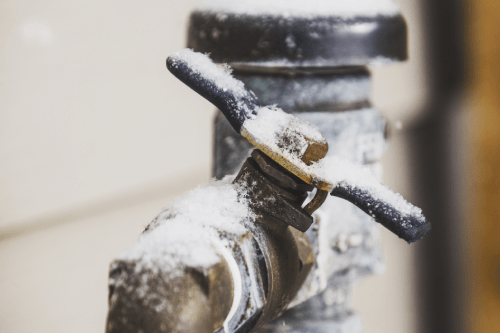On this page in the next paragraphs yow will discover a good deal of high-quality resources in regards to How To Avoid Freezing Pipes.

Cold weather can ruin your pipes, specifically by freezing pipelines. Right here's just how to stop it from taking place and what to do if it does.
Introduction
As temperatures drop, the risk of icy pipes rises, potentially leading to pricey repair work and water damages. Recognizing just how to stop icy pipelines is critical for homeowners in cool environments.
Comprehending Frozen Pipes
What causes pipelines to freeze?
Pipelines ice up when revealed to temperature levels listed below 32 ° F (0 ° C) for prolonged periods. As water inside the pipelines freezes, it expands, putting pressure on the pipe walls and possibly creating them to break.
Dangers and problems
Icy pipes can cause supply of water interruptions, building damage, and expensive repairs. Burst pipes can flooding homes and trigger considerable architectural damages.
Indications of Frozen Pipes
Determining frozen pipelines early can stop them from bursting.
Just how to identify icy pipelines
Look for lowered water flow from faucets, uncommon smells or noises from pipelines, and visible frost on revealed pipelines.
Avoidance Tips
Insulating susceptible pipes
Cover pipes in insulation sleeves or utilize heat tape to shield them from freezing temperature levels. Concentrate on pipelines in unheated or outside locations of the home.
Home heating methods
Keep interior areas properly heated up, especially locations with pipes. Open up closet doors to permit warm air to flow around pipelines under sinks.
Securing Exterior Pipes
Garden hoses and outside taps
Disconnect and drain yard pipes before wintertime. Install frost-proof spigots or cover outdoor taps with shielded caps.
What to Do If Your Pipelines Freeze
Immediate activities to take
If you presume frozen pipes, maintain faucets open to soothe stress as the ice melts. Use a hairdryer or towels taken in warm water to thaw pipelines slowly.
Long-Term Solutions
Structural modifications
Think about rerouting pipes far from exterior walls or unheated locations. Add extra insulation to attic rooms, cellars, and crawl spaces.
Updating insulation
Invest in top notch insulation for pipelines, attic rooms, and wall surfaces. Correct insulation helps preserve regular temperatures and decreases the threat of frozen pipelines.
Verdict
Preventing frozen pipes needs proactive steps and quick reactions. By recognizing the reasons, signs, and preventive measures, homeowners can shield their plumbing during cold weather.
6 Proven Ways to Prevent Frozen Pipes and Protect Your Home
Disconnect and Drain Garden Hoses
Before winter arrives, start by disconnecting your garden hoses and draining any remaining water. Close the shut-off valves that supply outdoor hose bibs and leave the outdoor faucet open to allow any residual water to drain. For extra protection, consider using faucet covers throughout the colder months. It’s also important to drain water from any sprinkler supply lines following the manufacturer’s directions.
Insulate Exposed Pipes
Insulating your pipes is an effective way to prevent freezing. Pipe insulation is readily available at home improvement stores and is relatively inexpensive. Pay close attention to pipes in unheated areas such as the attic, basement, crawl spaces, or garage. Apply foam insulation generously to create a buffer against the cold. You can also wrap your pipes in heat tape or thermostat-controlled heat cables for added warmth.
Seal Air Leaks
Inspect your home for any cracks or openings that could let in cold air. Seal any holes around the piping in interior or exterior walls, as well as the sill plates where your home rests on its foundation. Additionally, make sure to keep your garage door closed unless you’re entering or exiting. Leaving it open creates a significant air leak that can lead to frozen pipes.
Allow Warm Air Circulation
During cold snaps, it’s essential to allow warm air to circulate evenly throughout your home. Leave interior doors ajar to promote better airflow. Open kitchen and bathroom cabinets to help distribute heat consistently around the rooms. If you have small children or pets, be sure to remove any household chemicals or potentially harmful cleaners from open cabinets for safety.
Let Faucets Drip
A small trickle of water can make a big difference in preventing ice formation inside your pipes. When temperatures drop significantly, start a drip of water from all faucets served by exposed pipes. This continuous flow helps prevent the water from freezing. Additionally, running a few faucets slightly can relieve pressure inside the pipes, reducing the chances of a rupture if the water inside does freeze.
https://choateshvac.com/6-proven-ways-to-prevent-frozen-pipes-and-protect-your-home/

Do you like more info about Winter Plumbing Precautions: Preventing Frozen Pipes? Try to leave feedback down below. We would be happy to find out your insights about this blog entry. Hoping that you come back again soon. Sharing is caring. Who knows, you might be helping someone out. Thanks a lot for taking the time to read it.
Call Today